Autumn in Canada is officially here, and there is nothing more peaceful than long, scenic hacks with your equine partner after a likely busy and strenuous competition season. As much as we like to enjoy this exceptionally relaxing and beautiful season, we also know that it is a perfect time to evaluate your horse’s condition and prepare for the inevitable – a classic cold, long Canadian winter. Winter is a tough season on even the most in shape equine, so the best way to maintain their condition through the coldest months is to have them come out of fall in great condition. Check out some of our feeding tips, below.
Pasture and Hay Changes
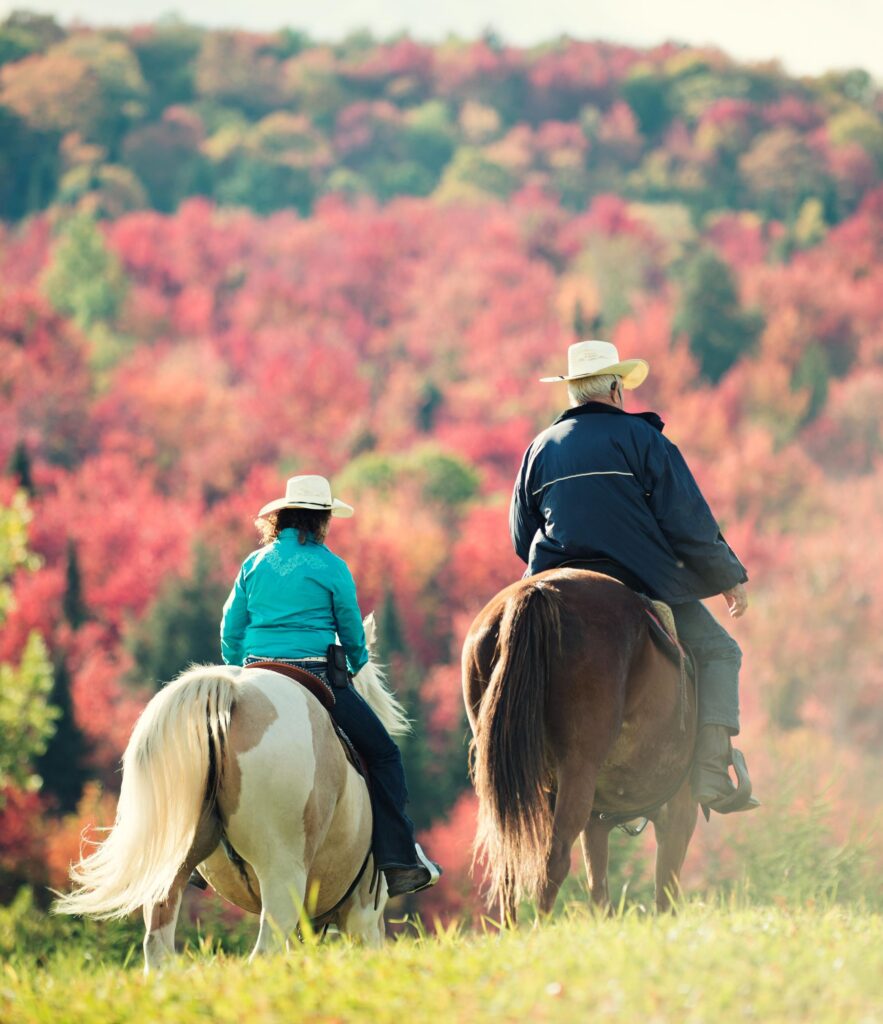
As the temperatures changes from warm and sunny to cool and damp here in Canada, this means changes to the core of all equine diets; moving from green, lush pastures to a feed plan centered around hay. Early spring brings a new sprout of sugary grass, and although usually associated with spring pastures, fall laminitis can still be a concern to equines who are prone to it. If you have a horse or pony prone to laminitis, be sure to limit their pasture time in early fall. Winter weather means pasture forage is unavailable, so fall is the best time to introduce more hay into the horse diet as it will be the sole source of forage for months to come.
Hay quality is of utmost importance; depending on the type of hay you have by now stored in the mow, you may need to start your horse on a vitamin/mineral supplement to ensure they are getting all the nutrients they require. Long, stemmy hay will be more mature and therefore likely lower in calories and nutrients than leafy hay. Access to hay 24/7 in colder temperatures is ideal due to fermenting fibre acting as a natural warming agent from the inside out and creating energy. We all know winter can come in like a lion in Canada at any moment, so fall is a great time to get your horse prepared with their new sole source of forage. If your area is prone to hay shortages, hay replacer pellets can lengthen your supply, and beet pulp is a good high fibre calorie option with low starch.
Adding Concentrates
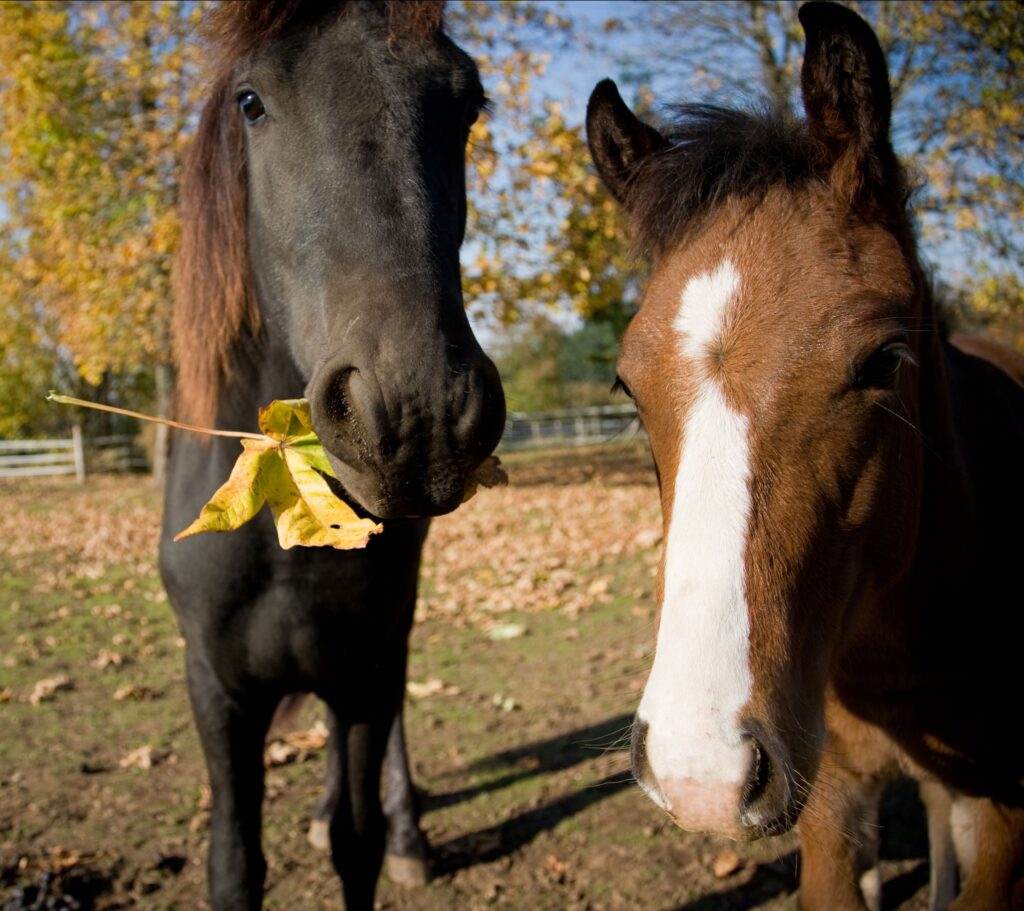
Once you have started the slow process of adding more hay to your horse’s diets, it’s time to evaluate body condition and consider added concentrates that are high in calories and energy to prep your horse to get through winter without weight loss. As the temperature drops, digestible energy requirements increase and more calories are required simply to keep your horse warm on those frigid days, let alone if you still have training and performance needs throughout the season. Although we like to see horses sitting around a 5 on the Henneke body condition scale, it is acceptable to have horses teetering closer towards a 6 than a 4 coming into winter, especially for those horses who tend to lose weight during those frigid months. It is much easier to maintain a horse with a light layer of insulation through winter than to try to play catch up in the late winter and early spring on a horse that has lost too much weight.
The fall feeding goal, therefore, is to build condition on your horse before the energy and calorie demands of survival detracts from an already necessary weight gain. Diets that are high in fat should be introduced slowly (as all diet changes should be) in order to start building that extra body condition. If you are like most of us and fear the high energy that may come along with the season itself, make sure you opt for a low starch, high fat diet for slow burning cool energy.
Water and Farm Maintenance
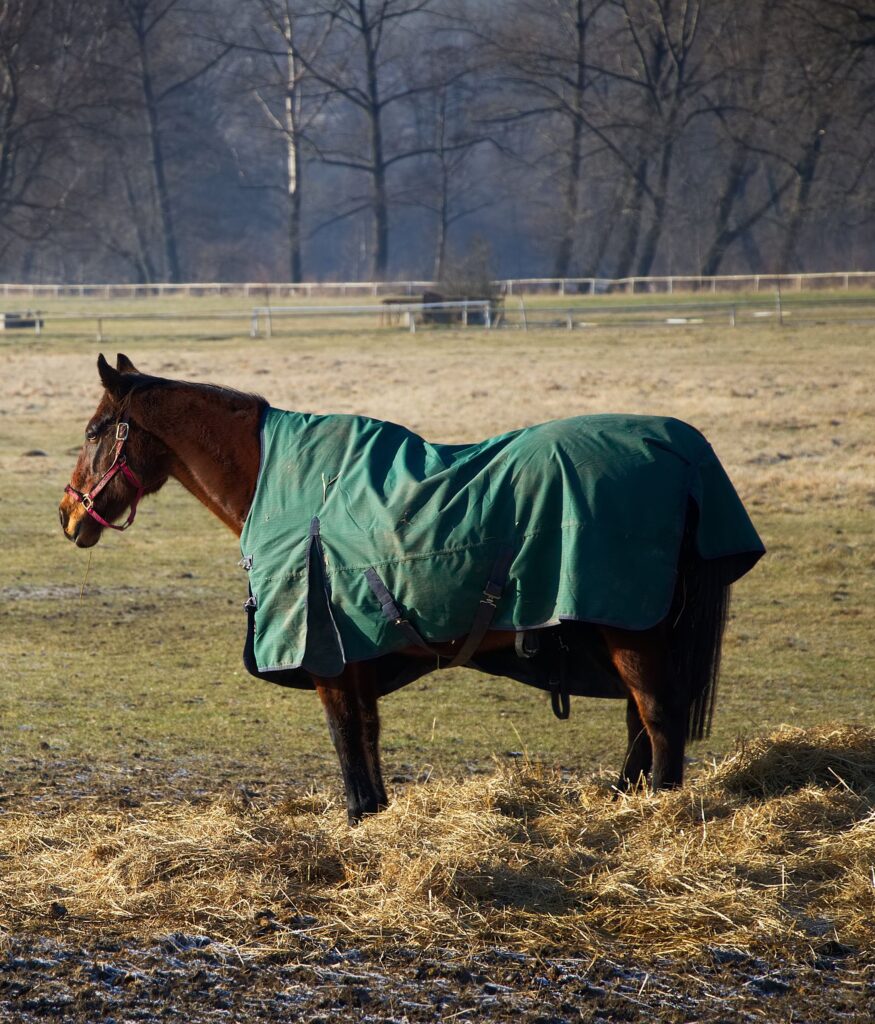
In case we haven’t said it enough, access to fresh, clean water for your horse is always a must. The transition from grass to mainly hay means that your horse is no longer getting the moisture benefits during grazing. Adding to the already lower intake of water, our horses start to spend more time indoors, exercising less and reducing movement in the gut. In order to ensure the gut is moving along as intended and to reduce colic fears, it is a good idea to add loose salt to your concentrates to encourage drinking. Horses will also not drink water that is too cold, so the fall is a good time to invest in heated buckets and trough heaters.
Fall is also a great time to get your farm organized and winter prepped; take a look around to fix any broken run-ins and fence boards as best as you can and check your electrical in the barn to prevent accidents. Muddy areas can also wreak havoc on the hooves of our four-legged best friends – we’re thinking of the pains of thrush, abscesses, and scratches – so take a look at high traffic, muddy areas in your paddocks and consider covering them with area pads as the fall rains will be starting to come through more frequently.
Speaking of rain, if you have a horse that is prone to the infamous “rain rot” it’s a good idea to grab a rain sheet the next time you’re through your local store. Light blanketing can begin for those horses who particularly struggle to grow a decent winter coat, but always be sure to take the blankets off frequently to monitor body condition by look and feel.
Lastly, but most importantly, the fall is the best time to take your horses off grass pastures and move to dry lots or pastures that can be sacrificed. Leaf growth in this time will help protect from the winter elements and give your paddocks a good chance to grow quality pasture for next summer. Your horse, and your wallet, will thank you for taking this fall preparation step.
Preparing your horse for the winter weather by ensuring their calorie intake is higher than their calorie usage will give you a step ahead of whatever treacherous weather lies ahead for them in the winter. Increasing their body condition score with high fat diets and blanketing will reduce their chances of losing too much weight in the winter and have them ready for training in the spring time. Check out our featured “fall feeds” to get you started here!
For more information or to schedule an on-farm call or hay analysis from one of our reps, visit our website, contact us, or email us directly at: happyhorses@masterfeeds.com
Product Spotlight
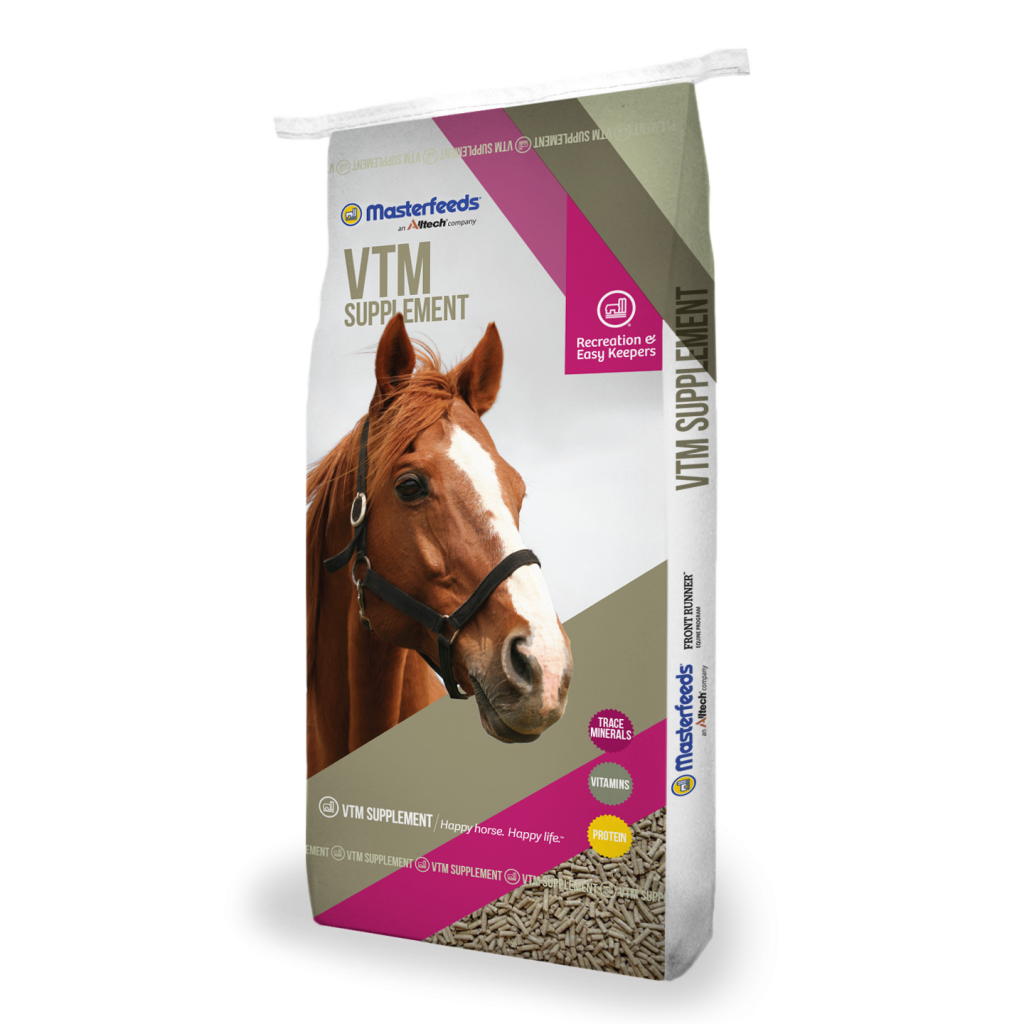
VITAMIN & MINERAL SUPPLEMENT (PELLET)
EAST | WEST
FOR ALL CLASSES OF HORSES WHEN EXTRA NUTRIENTS ARE REQUIRED
Masterfeeds VTM is a trace mineral and vitamin supplement with high protein. It can be mixed with grains to make your own ration or top dressed on complete feeds to add additional minerals, vitamins and protein. Very palatable and versatile, it’s a great choice for all classes of horses when extra nutrients are required.
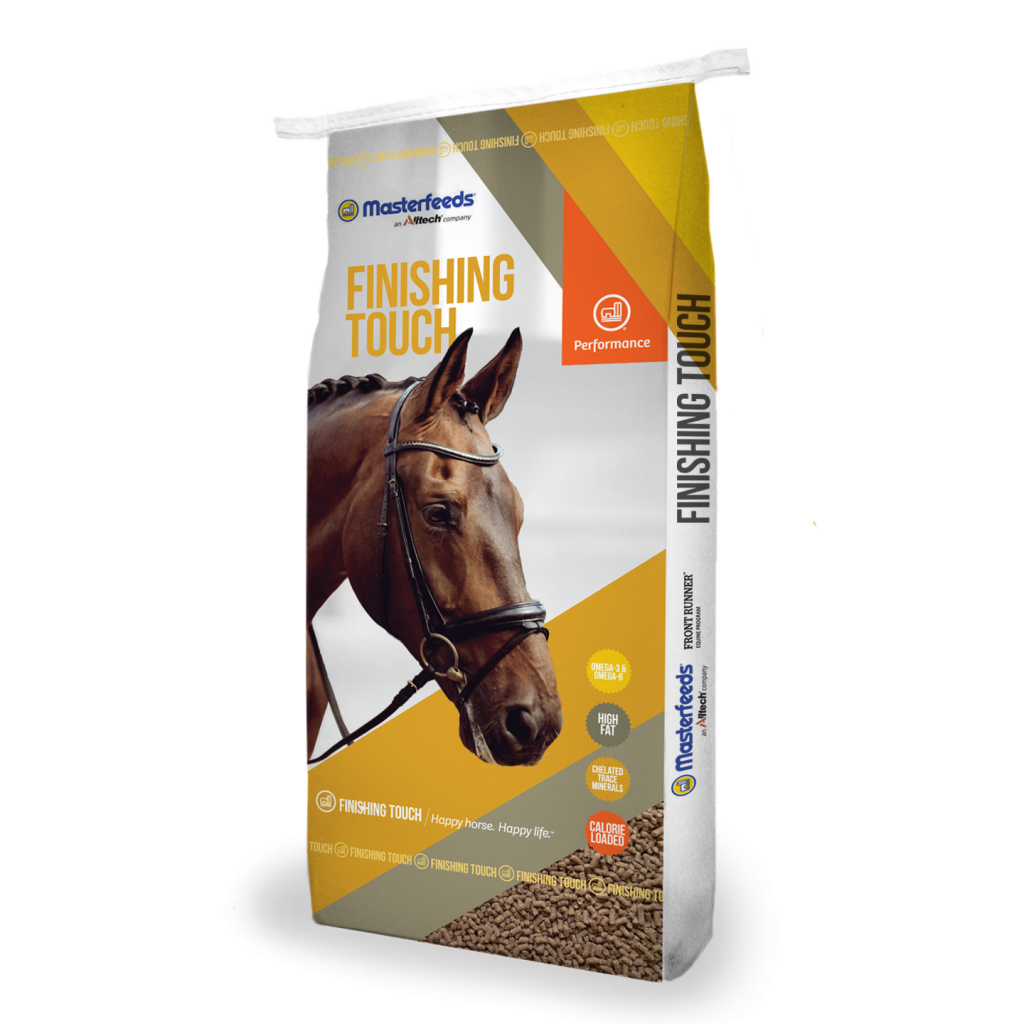
FINISHING TOUCH (CRUMB)
EAST | WEST
FOR IMPROVED PERFORMANCE, WEIGHT GAIN & COAT CONDITION
Masterfeeds Finishing Touch is a smart energy addition to any developmental diet. This high fat supplement is designed to be top-dressed on a balanced complete feed to increase the caloric density of the diet and add fat calories as an energy source. A very palatable formula, beneficial to any horse for improved performance, weight gain and coat condition. It’s an excellent choice for extra fit and finish and for enhancing fertility.
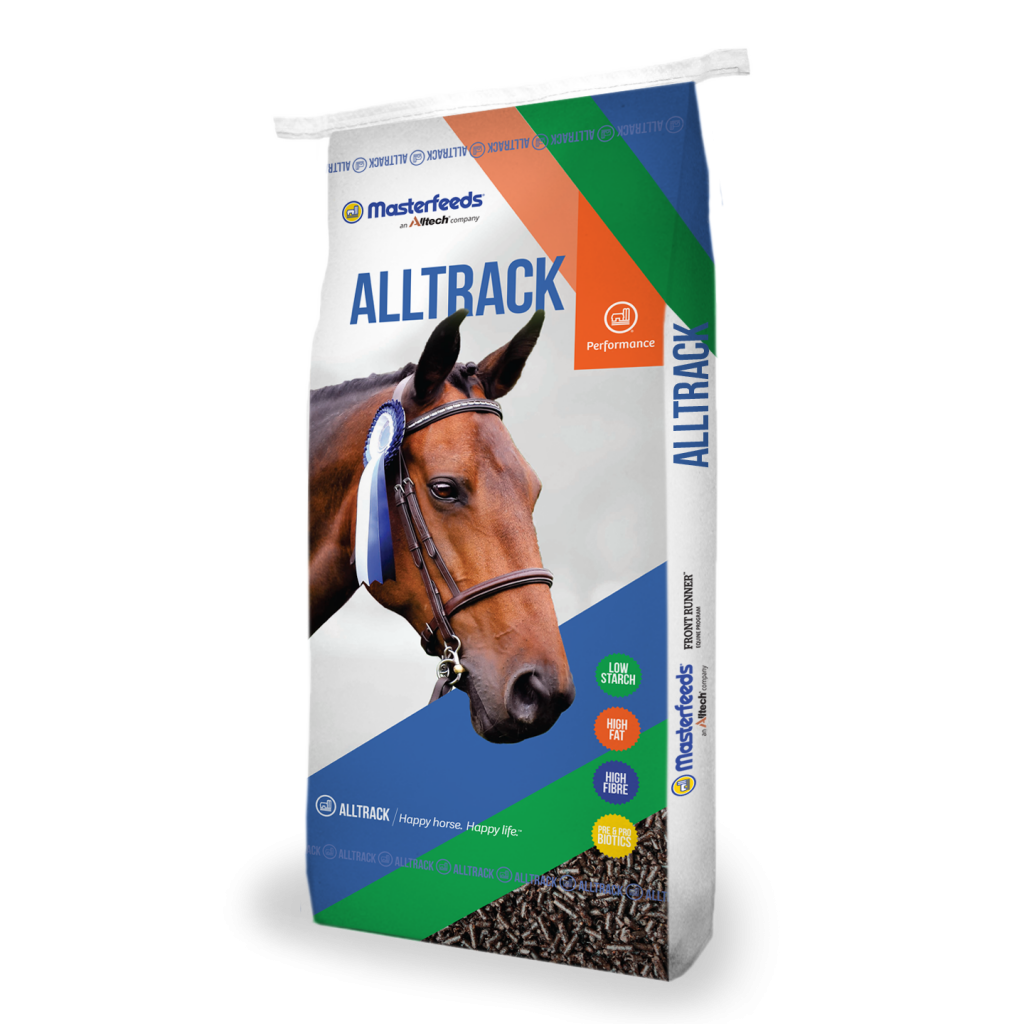
ALLTRACK (TEXTURIZED)
EAST | WEST
FOR ALL TYPES OF EQUINE ATHLETES
Alltrack is a great choice for owners and trainers looking for a very low starch texturized feed for high performance athletes. A blend of high quality fibres, beet pulp and soft pellets fortified with proteins, vitamins and minerals blended with oil and molasses makes a palatable complete and balanced feed. It promotes good digestive and muscle health to keep your horses feeling great and ready for all sports and all tracts.
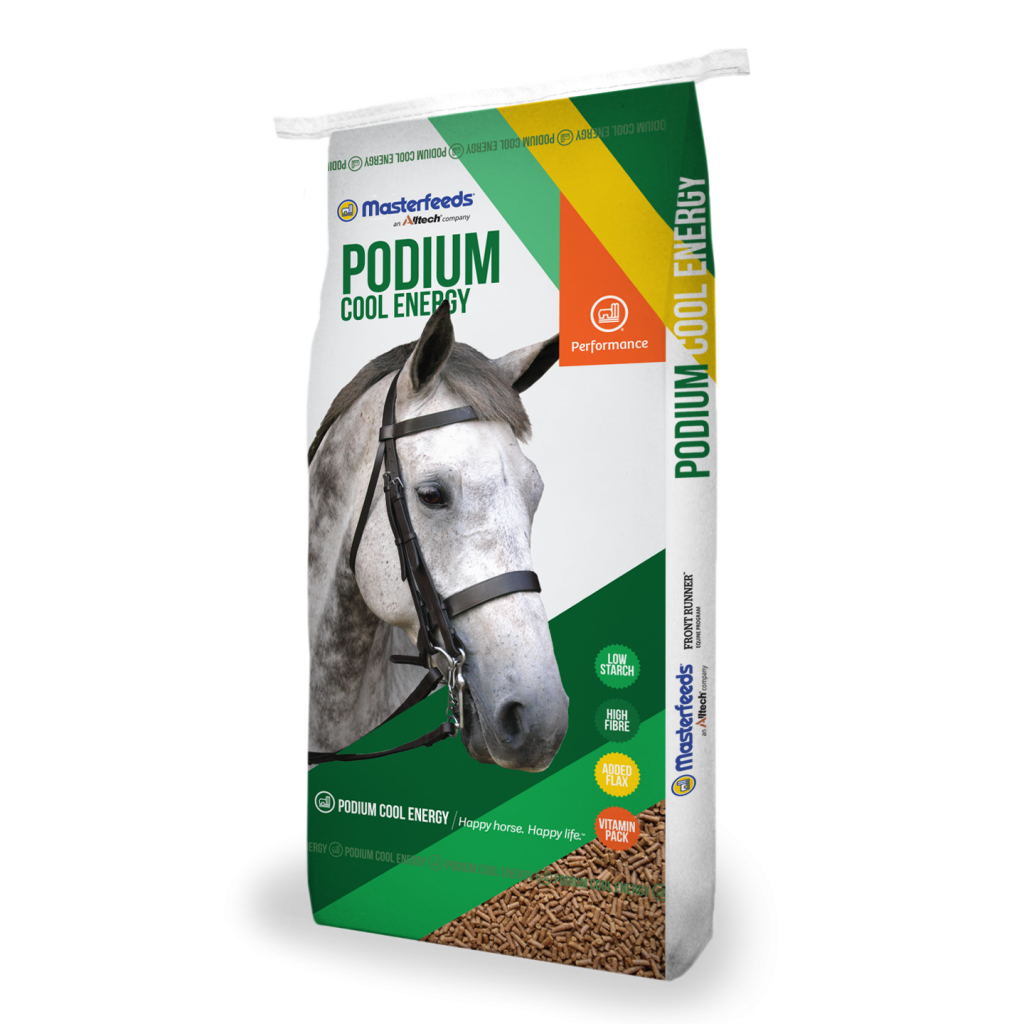
PODIUM COOL ENERGY (PELLET)
EAST | WEST
FOR ALL TYPES OF EQUINE ATHLETES
Podium Cool Energy is a favourite with owners and trainers looking for a very low starch feed for high performance athletes. With proven results in reducing ulcer incidence and tying up, it is a great choice for standardbred racehorses, eventers, and any trainers and riders looking for an ultra low starch ration for working athletes. Added flax provides an excellent source of Omega-3 and it is fortified with our premium vitamin mineral pack for a complete and balanced feed.
Related Posts
- Winter Nutrition Tips
- Feeding the Mare and Foal
- Breaking Down Nutrition
- Spring Nutrition Tips
- Feeding for Performance
- All About Hay
- Feeding the Senior Horse
- Feeding Supplements
- Economical Horse Management & Feeding Tips
- The Beginner’s Guide to the Equine Digestive System
- Macronutrients: The “Big Three” of the Equine Diet
- Feeding the Racehorse
- Feeding the OTTB
- Feeding the Active Senior
